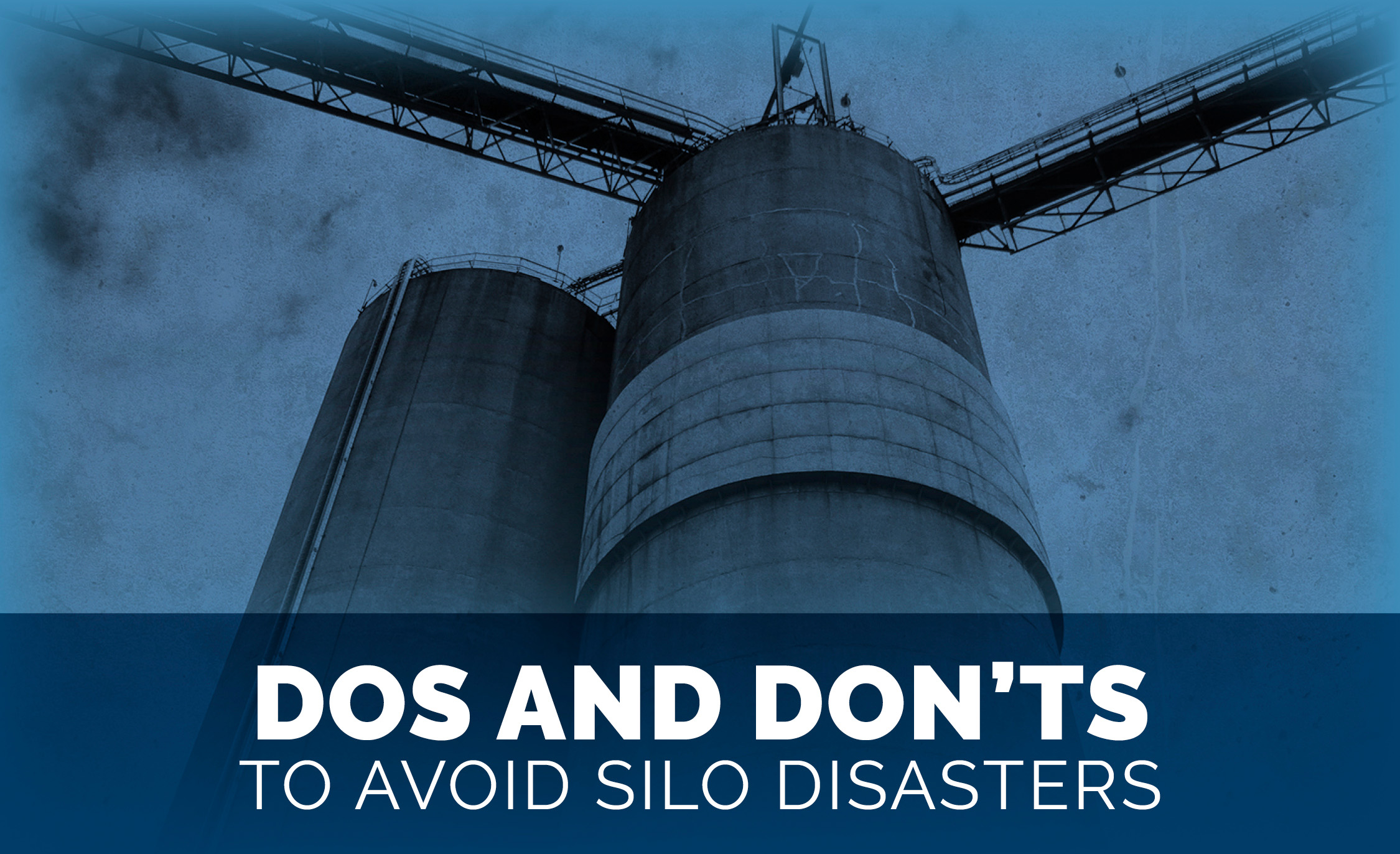CATEGORIES
When it comes to your annual silo maintenance calendar, it's always the best bet to get things on the schedule sooner, rather than later. The best plan will get all your maintenance booked at once. Doing so allows you to plan for necessary silo maintenance like cleaning, silo inspection, and silo restoration or repairs when you have a naturally lighter schedule.
| Silo Cleaning | Silo Inspection | Silo Repair and Restoration | Silo Construction | |
| January | Off Season | |||
| February | ||||
| March | Exterior Silo Repairs | |||
| April | Exterior Silo Repairs | |||
| May | Exterior Silo Repairs | |||
| June | Off Season | Warm/Dry Weather | ||
| July | Off Season | Warm/Dry Weather | ||
| August | Off Season | Warm/Dry Weather | ||
| September | Off Season | Exterior Silo Repairs | ||
| October | Off Season | Exterior Silo Repairs | ||
| November | Off Season | Exterior Silo Repairs | ||
| December | Off Season | |||
Silo Inspection
Regular silo inspections and routine silo maintenance help you increase the useful life of your silo, reduce unplanned downtime, and uphold production goals. In fact, professional inspections are the most effective, preventive method to ensure concrete and steel structures, surfaces, and silos remain safe and fully operational. Best practices recommend professional inspections at two- to five-year intervals to help identify any issues that could lead to silo failure.
Silo Restoration and Repairs
Consistently monitoring the exterior of the silo can assist facilities in identifying emerging or escalating problems, potentially requiring more frequent or timely inspections. With proper design and construction, a significant portion of this damage can be avoided or reduced through regular inspections, maintenance, and a thorough knowledge of appropriate protocols. Any silo that experiences sudden deterioration or displays signs of new damage should be inspected by a professional immediately. While the end of the year is often chaotic, it's a good time to make sure silo maintenance services like restoration and repair. Minor exterior silo repairs that have been identified in a professional silo inspection earlier in the year can be scheduled during temperate times of the year, like spring and fall, as they should have little to no impact on production schedules.
Silo Construction
Jumpform and slipform silo construction methods are two of the most flexible in the industry today. So, what determines the construction approach? Jumpform construction is not as time-sensitive as slipform because it is completed in stages, rather than a continuous pour. When looking at the best time of year to schedule your silo construction project, it's often wise to book dryer times of the year, such as the summer, to help prevent weather-related delays.
Don't delay. Get your annual silo maintenance scheduled today.
It's easy to overlook your silo, but it's beneficial to make it part of your routine to inspect it for any signs of alteration, such as concrete cracking or roof-top coatings peeling and flaking. While you should regularly examine your silo exterior, the only reliable way to determine what preventive maintenance is needed is to have a professional inspect the silos.
Silo inspection is the most effective, preventive method to ensure concrete and steel structures, surfaces, and silos remain safe and fully operational. Professional silo inspection covers more areas of the silo than an in-house inspection. During a professional inspection, experts with experience in inspection and/or a trained silo engineer will thoroughly analyze your silo(s) to identify any major issues.
Artificial intelligence (A.I.) supplemental inspections, offered exclusively by Marietta Silos, remove any guesswork regarding exterior silo inspection. Using drone capture technology, Marietta Silos can quickly and precisely inspect external silos or bulk storage containers with extreme accuracy. These images are then run through our A.I. algorithms, which are able to detect even small defects (smaller than 0.1 mm) and map the precise location onto the captured silo image for future examination.
Following a thorough, professional silo inspection, you receive a detailed list of recommended silo repairs. Taking action on the proposed silo repairs and maintenance ahead of time will help maintain the silo and lessen the likelihood of costly silo restoration down the line. The cost of preventive maintenance and silo restoration is minimal compared to the financial and physical toll that a full collapse can have on your company and team.
Best practices recommend professional inspections at two- to five-year intervals to help identify any issues that could lead to silo failure. For more information on silo intervals, view our video, How Often Should I Have My Silo Inspected, or plan your next silo inspection.

Modern silos have been used since the late 19th century. Yet since that time, their design, construction, and recommended maintenance services have undergone drastic changes to improve safety. Here are the top ways facility owners and managers can help prevent storage silo disasters.
|
|
||||||||||||||||||||||||||||||||||||||||||||||||||||||||||||||||
Is your silo in need of repair or restoration? Contact us today for a quote.



